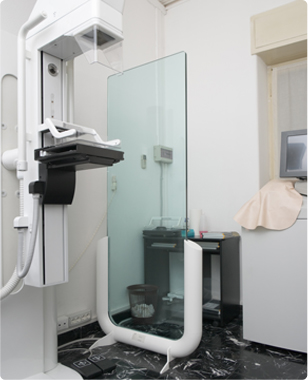Going Through the Fight

Cancer is a major illness, but not everyone who gets cancer will die from it. Many people alive today have a history of cancer. For them, cancer has become a chronic (on-going) health problem, like high blood pressure or diabetes.
What are the next steps to having discovered that you have cancer? Let us guide you.
Step One
The answers are inside you.
Loving someone is caring for that person. Knowing the truth about your health will help you, and the ones who love you, let go of worry, anxiety and uncertainty.
And focus on the things in life that really matter. Cancer, if treated early, is associated with improved treatment outcome.
CANSCREEN is a screening programme that aims to provide screening for individuals at a higher risk of getting cancer.

Cancer Screening for Peace of Mind
- Includes screening by a cancer specialist
- Screening packages that are customised to suit individual risk profiles
- Genetic counselling for those with high risk hereditary cancers
Blood Investigations to screen for cancers may include tumour markers.
These may comprise:
- EBV (for nasapharynx)
- Alpha-Fetoprotein (for liver)
- CEA (for colon & rectum)
- Ca 19.9 (for pancreas)
- PSA (for prostate)
- Ca 125 (for ovary)
- Ca 15.3 (for breast)
Other specialised tests may include:
- Low dose CT lung
- MRI Breast
- Colonoscopy
- Gastroscopy
- Nasoscopy
For further enquiries, please contact: +65 67389333 or e-mail: enquiry@canhope.org
Step Two
Cancer may be difficult to detect, but for some types of cancer, the earlier it is detected, the better are the chances of treating it effectively. Imaging techniques – methods of producing pictures of the body – have become an important element of early detection for many cancers. But imaging is not simply used for detection. Imaging is also important for determining the stage (telling how advanced the cancer is) and the precise locations of cancer to aid in directing surgery and other cancer treatments, or to check if a cancer has returned.
Radiology and Imaging Technologies have been integrated for detection, diagnosis and treatment. The range of specialised radiological and imaging services includes:

Asia’s first Symbia Truepoint SPECT CT
Asia’s first Symbia Truepoint SPECT CT integrates the functional sensitivity of a SPECT Gamma Camera System with the detailed anatomical information provided by a 6-slice CT system for enhanced tumour detection. SPECT also uses specific isotopes like I131 Octreotide or MIBG to localise small atypical malignancies like Neuroendocrine tumours.
Aquilion ONE™
Regarded as one of the most advanced CT systems available today, the Aquilion ONE™ images an entire organ in a single rotation, ensuring greater accuracy and diagnostic confidence. In one scan, it provides our medical team with a complete 3D depiction of an organ, as well as how the organ and blood flow are dynamically functioning or moving.
This leap in CT technology lets us perform uniquely comprehensive exams, including functional studies, instead of multiple tests and invasive procedures. For our patients, the Aquilion ONE™ achieves lowered healthcare costs and reduced exposure to radiation dosages.
TomoTherapy®
Since March 2006, we offer patients TomoTherapy® based on the TomoTherapy HI-ART® System. Our patients have benefited from this advanced method of delivering precisely targeted intensity modulated radiation therapy with minimum impact on healthy tissue.
Combining treatment planning, patient positioning and treatment delivery, TomoTherapy® is able to verify the location of the cancer with CT imagery and make adjustments for more effective treatments with reduced side effects.
The PET/CT Machine
Positron Emission Tomography (PET) and Computerised Tomography (CT) are imaging tools that help to pinpoint the location of cancer in the body. The highly sensitive PET scan detects the metabolic signal of active cancer cells and the CT scan provides a detailed picture that reveals the location, size and shape of cancerous growths.
Our PET-CT Machine integrates PET and CT technologies into a single device, allowing both sets of data to be obtained at one time. This aids in accurate tumour detection and localisation for a variety of cancers. The PET-CT scan also helps our medical team assess responses to and the effectiveness of treatments and detect residual or recurrent diseases.
Da Vinci Surgical System
The da Vinci Surgical System is a completely intuitive laparoscopic surgical robot that integrates the latest advancements in robotics and computer-enhanced technology. It allows our specialist surgeons to perform delicate and complex operations through a few tiny incisions with increased vision, precision, dexterity and control.
This translates to shorter hospital stays, and less pain and risk of infections for our patients. Blood loss and the need for transfusions also are reduced and scarring is expected to be less evident. Overall, the da Vinci Surgical System delivers faster recovery times for our patients.
Magnetic Resonance Imaging (MRI)
Magnetic Resonance Imaging (MRI) technology uses a strong magnetic field and radio waves to provide clear and detailed diagnostic images, which in certain areas of the body, are superior to other imaging methods. In cancer imaging, it is especially good for the brain and spinal cord as well as the liver.
Interventional Radiological Services
Interventional Radiological Services involves highly specialised, minimally invasive and highly targeted treatment modalities performed by specially trained radiologists who use image guidance such as CT scans, ultrasounds and angiography, without having to perform surgery. Some treatment modalities for patients with cancer include:
- Chemoembolisation of liver tumours which involves the use of a tiny tube called a catheter to deliver the drugs directly into the artery supplying the tumour and then to block the blood supply to the tumour;
- Radiofrequency ablation, which involves the use of a special needle-like electrode which is inserted, under image guidance, into a tumour through the skin to heat up and kill the tumour by electricity supplied at the frequency of radio waves;
- Image-guided venous access for long term chemotherapy; and
- Image-guided fine needle biopsies.
Mammotome Breast Biopsy System
The Mammotome Breast Biopsy System is a special method which removes tiny abnormalities detected on mammography or ultrasound of the breast, called microcalcifications that can be the earliest sign of cancer. The procedure is fast, causes little pain, and requires no sutures. The suspicious microcalcifications are removed through special needles. Stereotactic (X-rays from two angles) guidance or ultrasound guidance is used to the guide the Mammotome probe for very accurate tissue sampling.
Step Three

The histopathology report we produce for every patient starts our team off with an accurate, pathological diagnosis. It diagnoses and categorises tumours, provides information on the cell of origin and shares invaluable insight into prognosis.
As a key resource in effective cancer management, our pathological examinations are benchmarked to the highest standards of accuracy and comprehensiveness. This is of utmost importance to us as the results of the initial biopsy will invariably shape the therapeutic recommendations that our oncologists make. It is only with the insights obtained from histopathology reports that we are able to create individualised treatment plans for our patients, designed to deliver optimal care and results.
The report also establishes the criteria for eligibility for clinical trials, gives information for clinical databases to be used in clinical and basic research and helps provide quality assurance. As we strive to achieve the greatest benefits for our patients, the pursuit of excellence in the field of pathology will continue to be a priority for us.
Step Four
When you seek care at Parkway Cancer Centres, you have access to a wide variety of treatment options. Depending on your health, physical status, type, origin and stage of cancer, your treatment option may be surgery, radiotherapy, chemotherapy or a combination of these, which would then be referred to as the, Multi–Disciplinary Approach.

Chemotherapy
The biggest advancement in the field of cancer treatment is the fast expanding arsenal of medicines in the treatment of cancer. These include cytotoxic agents as well as biologic agents and “targeted cancer therapies”.
These newer chemotherapies are associated with higher effectiveness, less side effects and improved overall results. Some of these drugs have no hair loss, nausea, vomiting or other significant side effects.
The administration of chemotherapy is closely supervised by the medical oncologists and carried out by nurses with specialised training in Oncology.
Chemotherapy is given in six ambulatory treatment centres in Gleneagles Hospital, Mount Elizabeth Hospital and Mount Elizabeth Novena Hospital.
The various applications of chemotherapy include:
- Upfront or induction chemotherapy to shrink the tumour size before definitive local treatment with either surgery or radiotherapy;
- Concurrent chemo-radiation where the drugs are used as radio-sensitisers to improve the effectiveness of radiotherapy;
- Adjuvant chemotherapy (therapy after the initial treatment of cancer to suppress the secondary tumour formation) where the drugs are given after surgery or radiotherapy to treat micro-metastases which cannot be seen, so that patients will have a higher chance of cure;
- Curative chemotherapy in the treatment of cancers which are very chemo-sensitive like lymphoma, germ cell tumours and leukemias; High-dose chemotherapy and stem cell rescue;
- Palliative chemotherapy for advanced cancers aimed at killing the cancer cells, controlling disease, preserving quality-of-life and prolonging overall survival.
Radiation Therapy
The greatest challenge for Radiation Therapy is to attain the highest probability of cure with the least side effects.
Modern advances in computers and the parallel advances in imaging and biomedical engineering have allowed a higher level of complexity to be incorporated into radiation treatment planning and delivery. This has resulted in better localisation of tumours, more accurate delivery of radiation into the tumour and better avoidance of radiation high doses into normal tissues.
Our Centre offers proven radiation treatment for cancers and benign tumours. These treatments are either carried out alone or as part of a multi-modality treatment (with chemotherapy or surgery).
The treatments include:
- Intensity-Modulated Radiation Therapy (IMRT)
- Image-Guided Radiation Therapy (IGRT)
- 3D Conformal Radiation Therapy
- Conventional Radiation Therapy
- Stereotactic Radiation Therapy
- Radiosurgery
- Brachytherapy and Implants
Since 2006, we offer patients TomoTherapy® (Image-Guided Radiation Therapy) using a TomoTherapy HI-ART System.
It delivers precise treatment doses to the tumour and minimum radiation is deposited on healthy tissue.
With this system, the radiation oncologist and therapists can check the location of the patient’s tumour before each treatment, using the computed tomography images taken with the machine, before delivering painless and precise radiation therapy based on a carefully customised plan.
Surgery
Our specialist surgeons have extensive experience in the surgical management of cancer. The major advances in surgery are readily available in our Centre.
These include radical surgery for advanced cancers, conservation surgery, minimal access surgery and reconstructive surgery.
We have surgical oncologists who specialise in each of these areas:
- Breast surgery
- Colorectal surgery
- Thoracic surgery
- Head and Neck surgery
- Otorhinolaryngology
- Gynaecological surgery
- Neurosurgery – Orthopaedic surgery
- Urological surgery
- Gastrointestinal and Hepatic surgery
- Reconstructive surgery
- General surgery
Supporting the surgeons is a team of anaesthetists, intensivists, and physiotherapy and rehabilitation team to provide the necessary pre- and post-operative care to ensure safe and speedy recovery.
Step Five

Palliative Care is given to improve the quality of life of patients who have a serious or life-threatening disease. The goal of palliative care is to prevent or treat as early as possible the symptoms of the disease, side effects caused by treatment of the disease, and psychological, social, and spiritual problems related to the disease or its treatment. It can also be called comfort care, supportive care, and symptom management.
Palliative care:
- Provides relief from pain and other distressing symptoms;
- Affirms life and regards dying as a normal process;
- Intends neither to hasten or postpone death;
- Integrates the psychological and spiritual aspects of patient care;
- Offers a support system to help patients live as actively as possible until death;
- Offers a support system to help the family cope during the patients illness and in their own bereavement;
- Uses a team approach to address the needs of patients and their families, including bereavement counselling, if indicated;
- Will enhance quality of life, and may also positively influence the course of illness;
- Is applicable early in the course of illness, in conjunction with other therapies that are intended to prolong life, such as chemotherapy or radiation therapy, and includes those investigations needed to better understand and manage distressing clinical complications.
In most of the world, the majority of cancer patients are in advances stages of cancer when first seen by a medical professional. For them, the only realistic treatment option is pain relief and palliative care. Effective approaches to palliative care are available to improve the quality of life for cancer patients.
Disclaimer Notice:
The information provided on this website is not intended or implied to be a substitute for professional medical advice, diagnosis or treatment. All content, including text, graphics, images and information, contained on or available through this website is for general information purposes only. Parkway Cancer Centre makes no representation and assumes no responsibility if the information, contained on or available through this website, is taken without our specialists’ consult.
